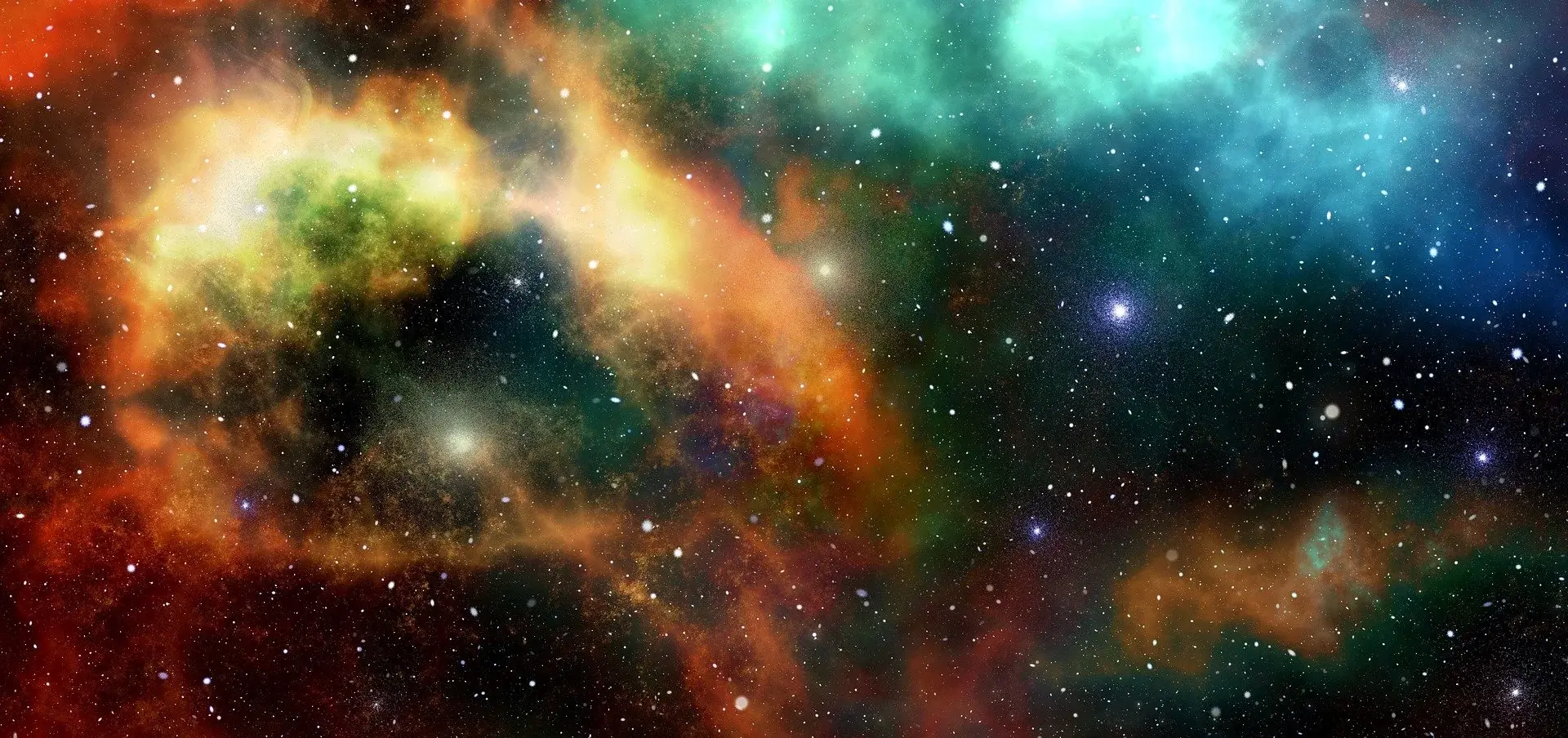Our universe could be twice as old as current estimates, according to a new study that challenges the dominant cosmological model and sheds new light on the so-called “impossible early galaxy problem.”

Ok, so I got the paper from its original author after emailing him about it (who even thanked me for the interest in his work, I freaking love scientists). And while there’s a lot of math, half of which I’m not even remotely qualified to understand, here’s what I got from it:
First, the paper is quite broad and compares 6 different models, plain LCDM (vacuum has energy that’s constant throughout the universe, it drives the expansion, cosmological constant is constant), CCC (“covarying coupling constants”: cosmological constant isn’t constant and may change over time and space, and dark energy might be more of a field than a property of space), their hybrids with Tired Light, and Tired Light alone. There’s some more discussion about these models below, in case you’re interested.
Btw, Tired Light hypothesis suggests that there’s no expansion, light just loses energy as it travels though space and that’s what gets interpreted as red shift. It’s not widely accepted and is not really considered viable, as far as I know.
Here’s an important to this whole discussion part: proposed age increase comes only from hybrid models (since there wouldn’t be any change in LCDM, and in TL age of the universe kinda makes no sense — no expansion and all that).
So what the author has found is that the best model to explain those weird redshift observations from JWST is the hybrid CCC+TL model, which assumes both “cosmological constant isn’t constant” and “tired light is a thing”. And that combination seems highly unlikely.
So the universe probably isn’t 26+ bn years. It’s a stepping stone towards finding a better model.

To what are you referring when you say “those weird JWST red shift observations”? I’d be curious to read more about that specifically.

It’s about this — JWST found unusually bright early galaxies that already existed at around 350 mln years after the Big Bang, which is extremely early for such structures to exist. It implies that they should have started forming at around ~100 mln years, which is wa-ay earlier than previously thought. So CCC+TL is a model that tries to fit observed data, but it’s not the only proposed solution (and it’s quite convoluted due to including Tired Light).
You can google more about that using terms like JWST + early galaxies, high redshift galaxies, population III stars (refers to metallicity and goes “backwards”, Sun is a population I star).

In another paper on the arxiv, the author uses time-varying fundamental constants (c, h, kB) and relates them to a time-dependent Newton coupling, and calls this “varying coupling constants”. Can you say whether the author also has time-varying fundamental constants in this paper, or only a time-varying cosmological constant? The language in the abstract makes it sound like multiple “coupling constants”, but you only mention Λ, if I’m not missing anything.

Covarying coupling constants is an established name, so it’s used as is. But the paper only mentions lambda, as far as I remember. There might be something else used in the equations, I haven’t delved deep into those, but nothing else should really be required for this particular discussion.

I’m gonna need more than a single study making such a claim to consider it accurate. There’s plenty of one-off studies that make major claims and then nothing ever came about from it when closer scrutiny was applied by the scientific community.

Yes this is the correct response. The standard model is the standard model because it’s stood the test of decades of challenges. One paper does not topple this.
EDIT: also note, the early galaxy formation challenges are interesting but don’t require a revision of the cosmological model. The data is new and many of these results will be revised into the “less spectacular” bin (this is already happening).

Does anyone have access to the original article? It’s paywalled and scihub doesn’t seem to have it yet.
Apparently the difference in age comes from a hypothesis that fundamental cosmological constants aren’t really constant, but more akin to parameters that change over time. But I can’t seem to find any recent experiments or observations that even slightly back this up. And I’d be really interested to read more about this.
Although I remember the Hubble constant having slightly different non-overlapping values when calculated using two different methods with a high enough certainty. So constants being parameters is kinda a plausible hypothesis.
Sorry, I have noscript installed, and it was enough to bypass its paywall.
Story
Our universe could be twice as old as current estimates, according to a new study that challenges the dominant cosmological model and sheds new light on the so-called “impossible early galaxy problem.”The work is published in the journal Monthly Notices of the Royal Astronomical Society.
“Our newly-devised model stretches the galaxy formation time by a several billion years, making the universe 26.7 billion years old, and not 13.7 as previously estimated,” says author Rajendra Gupta, adjunct professor of physics in the Faculty of Science at the University of Ottawa.
For years, astronomers and physicists have calculated the age of our universe by measuring the time elapsed since the Big Bang and by studying the oldest stars based on the redshift of light coming from distant galaxies. In 2021, thanks to new techniques and advances in technology, the age of our universe was thus estimated at 13.797 billion years using the Lambda-CDM concordance model.
However, many scientists have been puzzled by the existence of stars like the Methuselah that appear to be older than the estimated age of our universe and by the discovery of early galaxies in an advanced state of evolution made possible by the James Webb Space Telescope. These galaxies, existing a mere 300 million years or so after the Big Bang, appear to have a level of maturity and mass typically associated with billions of years of cosmic evolution. Furthermore, they’re surprisingly small in size, adding another layer of mystery to the equation.
Zwicky’s tired light theory proposes that the redshift of light from distant galaxies is due to the gradual loss of energy by photons over vast cosmic distances. However, it was seen to conflict with observations. Yet Gupta found that “by allowing this theory to coexist with the expanding universe, it becomes possible to reinterpret the redshift as a hybrid phenomenon, rather than purely due to expansion.”
In addition to Zwicky’s tired light theory, Gupta introduces the idea of evolving “coupling constants,” as hypothesized by Paul Dirac. Coupling constants are fundamental physical constants that govern the interactions between particles. According to Dirac, these constants might have varied over time. By allowing them to evolve, the timeframe for the formation of early galaxies observed by the Webb telescope at high redshifts can be extended from a few hundred million years to several billion years. This provides a more feasible explanation for the advanced level of development and mass observed in these ancient galaxies.
Moreover, Gupta suggests that the traditional interpretation of the “cosmological constant,” which represents dark energy responsible for the accelerating expansion of the universe, needs revision. Instead, he proposes a constant that accounts for the evolution of the coupling constants. This modification in the cosmological model helps address the puzzle of small galaxy sizes observed in the early universe, allowing for more accurate observations.

That’s the news article, it wasn’t paywalled for me as well. I was talking about the original paper published here, the one I pasted the abstract from.
The paper itself costs €15. I’ve emailed the author asking for the paper btw, let’s see if he answers.

Moreover, Gupta suggests that the traditional interpretation of the “cosmological constant,” which represents dark energy responsible for the accelerating expansion of the universe, needs revision. Instead, he proposes a constant that accounts for the evolution of the coupling constants. This modification in the cosmological model helps address the puzzle of small galaxy sizes observed in the early universe, allowing for more accurate observations.
So, correct me if I’ve interpreted this incorrectly, that if coupling constants evolve over time, dark energy model needs to be revised. Does that mean it helps to simplify and/or resolve the dark energy theory or does it in fact make it more complex?
ELI5…if that’s possible.

It makes it different and gets us closer to understanding it. Right now, we have no idea what dark energy actually is, it’s just the name of the phenomenon of ever-accelerating expansion. Like, something is driving that expansion, and we call that something dark energy.
The simplest model — ΛCDM, assumes that there’s vacuum energy that’s constant throughout the universe, and that it’s what’s causing the expansion. Check my comments below for more info. There are other models too, like a modified gravity theory where it behaves as a repulsive force instead of an attractive one when applied on massive scales.
What this paper seems to be closer to is Quintessence. It assumes that dark energy is something like a field that can change over time and across space. I’ll make us revise general relativity (since cosmological constant is, well, constant in GR), but hopefully will get us closer to understanding the inner workings as a whole.
ELI5-ish: our current best guess is the universe is expanding because it kinda just fundamentally does that. It’s a property of space itself. If the paper turns out to be right in some way, then there’s some actual thing, not a property, that fills the universe, and that thing is what’s pushing everything apart. And there can be more or less of that thing making the universe expand differently at different times or within different regions. Or something else even, we’ll have to run a lot of experiments to figure it out.
Edit: so I read the original paper, and my initial assessment was wrong. It uses a hybrid model instead of plain quintessence or CCC-type model to demonstrate a better-fitting explanation, but the model itself is most likely not viable as an actual representation of reality.
Also, to clarify the difference between Quintessence and CCC. These are somewhat similar, but focus on different things. In quintessence, dark energy is believed to be a field-type thing, so it can naturally have different concentrations across time and space. In CCC, cosmological constant is assumed to be time-varying, but the theory doesn’t really describe what dark energy is, only how it behaves. Could be a field, but also could be something else. It doesn’t specify.

Thanks for the explanation!

Here’s the abstract btw:
Deep space observations of the James Webb Space Telescope (JWST) have revealed that the structure and masses of very early Universe galaxies at high redshifts (z∼15), existing at ∼0.3 Gyr after the BigBang, may be as evolved as the galaxies in existence for ∼10 Gyr. The JWST findings are thus in strong tension with the ΛCDM cosmological model. While tired light (TL) models have been shown to comply with the JWST angular galaxy size data, they cannot satisfactorily explain isotropy of the cosmic microwave background (CMB) observations or fit the supernovae distance modulus vs. redshift data well. We have developed hybrid models that include the tired light concept in the expanding universe. The hybrid ΛCDM model fits the supernovae type 1a data well but not the JWST observations. We present a model with covarying coupling constants (CCC), starting from the modified FLRW metric and resulting Einstein and Friedmann equations, and a CCC + TL hybrid model. They fit the Pantheon + data admirably, and the CCC + TL model is compliant with the JWST observations. It stretches the age of the universe to 26.7 Gyr with 5.8 Gyr at z=10 and 3.5 Gyr at z=20, giving enough time to form massive galaxies. It thus resolves the ‘impossible early galaxy’ problem without requiring the existence of primordial black hole seeds or modified power spectrum, rapid formation of massive population III stars, and super Eddington accretion rates. One could infer the CCC model as an extension of the ΛCDM model with a dynamic cosmological constant.
To clarify, tired light model proposes a hypothesis that the discrepancies in redshift are caused by light losing energy en route. Personally, I don’t really like this idea because it doesn’t really explain half the stuff, and introduces unnecessary unproven complexity. It’s not widely accepted as far as I know.
Also, they’re calling the cosmological constants “covarying coupling constants”, which I think is kind of funny. Why not use “parameters” for your paper since your hypothesis implies they can change over time? Missed a chance to coin some cool new term :)

Can I ask what other factors tired light doesn’t explain? It sounds like an interesting idea, and at passing glance sounds a lot simpler than the universal expansion we’ve settled on, so I’m curious what makes that not the case

Sure! I’m not too well-versed in this topic, but here’s a gist of it:
First, it’s a very old idea, somewhere from 1920s I think. Proposed as a possible solution way before we found out about the expansion.
One of the main issues is it violates conservation of energy, since in this hypothesis the photons lose energy en route, but there’s still no viable mechanism to absorb or account for that energy. It also doesn’t explain cosmic background radiation, while other theories explain it quite well.
Then there’s blur. If the light loses energy on interactions and all that, the photons should scatter and blur the image. That doesn’t happen.
And then there’s this time-dilation effect. When you look at supernovae at different distances, their explosions “run” at different paces, with further ones exploding slower. In LCDM model that’s easily explained by the light being stretched because of the expansion, and that’s what causes slower “runtime”. With TL’s predictions that shouldn’t happen at all, yet it’s an observable effect.
And there are probably more discrepancies that I can’t remember off the top of my head.

I knew the universe had work done!

@ourlifeintoronto The article touches on implications for dark energy. Anybody knowledgable in the area able to say a bit more about that?

What are you interested in specifically? Dark energy is a huge topic :)

@fearout @ourlifeintoronto Specifically, is this a way to remove the need for it in our models or not?

Nope.
Dark energy is basically what we call a force that drives the ever-accelerating expansion of the universe. Something is pushing spacetime itself to expand in all directions simultaneously, and that something isn’t accounted for by any other fields or forces.
There is a cosmological constant associated with dark energy, Λ (lambda). It represents energy density of dark energy across our universe. This is why the article (and the paper itself) mentions ΛCDM model — that’s the simplest dark energy model, where vacuum has constant energy throughout the universe and that’s what drives the expansion. There’s a special parameter w, which is a ratio of pressure to energy density of dark matter. It currently seems to be exactly -1, but different values of w yield different predictions for future fate of the universe.
What you need to know about w, is that if it’s exactly -1, it means that dark energy is indeed constant and the universe is going to continue to expand ever faster, ultimately headed towards Heat Death.
If it’s less than -1 (what’s called phantom dark energy), then the amount of energy somehow increases over time and we’re looking at the Big Rip scenario — the universe will eventually expand so fast that I’ll rip everything apart, even atoms. There’s some fun stuff that might happen if that’s the case, like boiling into a new big bang when trying to rip apart quarks (only works if there’s a lower matter energy state, I think), but that’s another topic and it’s highly speculative anyway.
And if it’s between -1 and 0, it means that dark energy decreases over time, and the expansion is going to slow down and eventually reverse, leading to a Big Crunch, and possibly Big Bounce, implying that the universe “beats” like a heart.
You can google Heat Death, Big Rip and Big Crunch to learn more.
Now, what the paper is suggesting (I think, I haven’t found/received the original paper yet to read it in full) is that recent JWST observations might turn out to be a piece of further evidence that the cosmological constant might not actually be constant, but more like some parameter that can change over time and space. That would kinda lower the importance of w, since the constant becomes parametrized and the “fate” can change in the future regardless. But it doesn’t remove dark energy in any way (it’s a phenomenon that demonstrably exists), just alters our understanding about how the universe operates.
Jeez that turned out to be a long comment. Hopefully my explanation wasn’t too convoluted :)

@fearout @ourlifeintoronto Thanks. That was very comprehensive!

Hey, so I got the paper from its original author, and I shared my thoughts in a recent comment. TLDR: the universe probably isn’t that old, and the models that predict it are somewhat weird and have little chance of actually being a true representation of reality. It’s more of an observation than a workable hypothesis.
The “cosmological constant,” Is also known as the Hubble constant, it refers to the rate of expansion in the universe. By knowing the speed of expansion it would be possible to “Rewind” the universe (like a video) to get an estimation of the universes age. I believe the authors are suggesting that dark energy has a bigger effect on the red shift than previously estimated.
As for Dark energy…
That is a topic of much discussion, there is “Dark Matter” and “Dark Energy” that we know about, thanks to Einstein. When they refer to either it’s safe to say that the don’t fully understand what they are only that they are. Personally I believe that Dark matter is just a particle that has yet to be discovered, and that Dark energy is a result of that particles interaction with matter.
Well, not really.
First of all, neither were suggested by Einstein. The concept of Dark matter comes from a Swiss physicist Fritz Zwicky from the early 1930s. He noticed that stars on galaxies’ periphery are rotating much faster than they should, so he guessed that there should be extra mass that’s somehow undetectable.
Dark energy concept is much younger, from 1990s. It was proposed by two astronomers trying to measure the rate at which expansion is slowing down, but discovered that it’s actually speeding up. Before that, it was believed that the universe got its initial speed kick from the Big Bang and is gradually slowing down. They won a Nobel prize for that too.
And Dark energy and Dark matter are wildly different and likely totally unrelated concepts. I think it’s unfortunate that they share the same adjective, it’s somewhat confusing. One is the expansion phenomenon, and the other is just another form of matter (most probably formed by a yet undiscovered field, quite similar to ordinary matter in a sense), but one that just doesn’t interact with ordinary matter or via electromagnetic forces. We “see” it through gravitational effects though. But there are currently no links between it and the expansion of the universe, and for now it doesn’t look like there’s going to be one.


